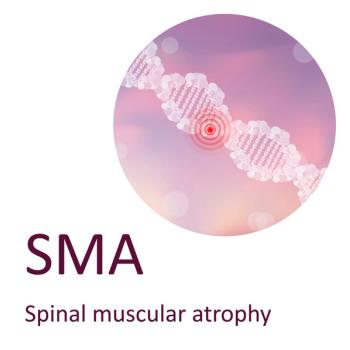
A New Way to See Muscle Wasting in Spinal Muscular Atrophy
In this diagnostic proof-of-concept trial, an emerging imaging approach that uses a handheld laser demonstrated the ability to visualize muscle degeneration in children with SMA.
Spinal muscular atrophy (SMA), a rare,
Still investigators have said there is a need for non-invasive technologies that enable rapid and objective assessment of the disease state and progression.
In a new
In this study, investigators recruited 10 pediatric patients with SMA and 10 gender and age-matched healthy volunteers. They performed regular ultrasound and MSOT imaging on muscles sites, including: upper arm (biceps muscle), lower arm (forearm flexors), upper leg (quadriceps muscle) and lower leg (triceps surae muscle) on both sides.
The primary end point was a comparison of the ultrasound and MSOT scans between healthy volunteers and those with SMA.
A total of 160 independent muscles of healthy volunteers and SMA patients were evaluated by ultrasound. In healthy volunteers all 80 muscles (100%) were rated normal. In contrast, 72 (90%) independent muscles of the SMA patients showed overall disease pathology. A total of 320 MSOT scans were evaluated; 50 were excluded because of insufficient optoacoustic signals.
Investigators found the MSOT imaging was able to visualize the muscle changes in SMA that was comparable to ultrasound. For example, in healthy volunteers, homogenous muscle fibers were seen but in SMA patients, patchy clusters of hypertrophic and atrophic muscles fibers led to the moth-eaten pattern that could be seen with the MSOT scan.
Additionally, in healthy volunteers, homogeneous signal bands were seen just beneath the muscle fascia. In SMA III patients, investigators saw the beginning of signal changes that were not homogeneous. In SMA I patients, signal intensities were patchy or even erased.
“The present study confirmed good to excellent repeatability of MSOT measurements in children, comparable to previous findings in adults. This highlights the promising potential for observational or interventional longitudinal studies in children and adolescents with neuromuscular disorders,” investigators wrote.
They indicated, however, that the study was limited by its small sample size. They also suggest that improved analysis and reconstruction techniques using artificial intelligence could improve the quality of the data.
SMA has generally been believed to affect as many as 10,000 to 25,000 children and adults in the United States, and about one in 40 to one in 50 people are carriers of the SMA gene,
Newsletter
Get the latest industry news, event updates, and more from Managed healthcare Executive.





















































